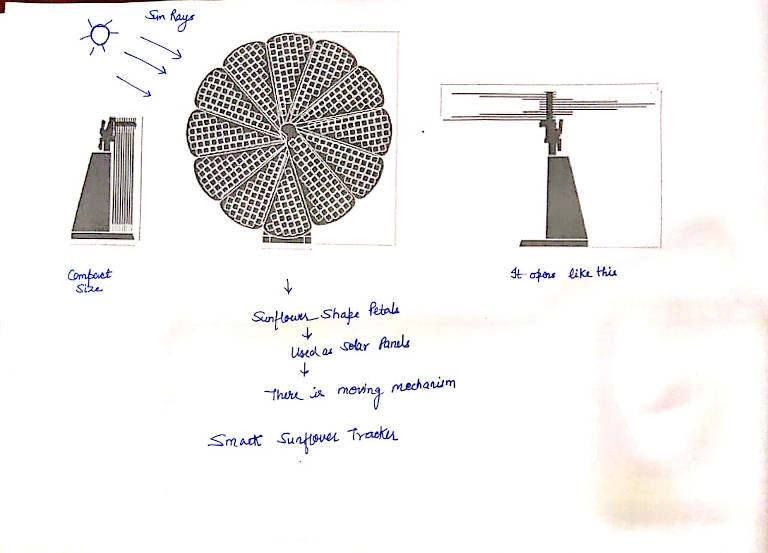PRINCIPLES AND PRACTICE
Stationary mounts tracker, which hold panels in a fixed position, can have their productivity compromised when the sun passes to a less-than-optimal angle.
Compensating for this, solar trackers automatically move to “track” the progress of the sun across the sky, thereby maximizing output.
The trackers required very flat and square-shaped tracts of land, which limited their overall utility.
For example, they weren't optimized for terrains with significant undulations or irregular shapes,
and couldn't accommodate nearby wetlands, drainage ponds, or pipelines, either.
Placement on such non-traditional sites was often impractical and costly.
A tracker with a distributed drive is ideal for high slopes and variations in terrain. It's much more flexible.
My aim for this project to capture maximum intensity in minimum posible space(flower shape)
and rotate whole set of solar cells in sun moving direction so that efficiency can maximize.
Under this design, One Petal has its own motor and driver, and there's no interconnecting drive line.These characteristics make it a better fit for the irregularities and obstacles mentioned earlier.
IDEA FOR FINAL PROJECT
What it will do
Project Proposal Sketch

Sketch Ideation

Problem Statement
As fixed solar panel do not aim directly to the sun due to constant motion of earth. This is the main reason this solar tracker will work. It reduce the time for users to change the positon of solar panel to face the sun
Smartflower Solar
- It was inspired by the helotropic properties of sunflower
- Heliotropism is when plant move in response to the direction of sun like a sunflower the smartflower open its panel when sun rises
- Its petals are the 12 solar panels
- It tracks the sun from east to west at an optimal angle of 90°
- It has a dual Axis tracking system
- Blossoms like a flower every morning and rotate on its axis
- It adjust the tilt angle of its panel to follow the sun and maximize absorption
- To help you use your electricity more efficient
- Sunflower solar hopes to make solar energy more efficient and accessible for homes and business.
- It's program with exact coordinates of its location during installation.
- In order to track the sun from its specific location Smartflower send u data on its energy use through a mobile app.
- Sunflower can adjust its position for shut up and Harsh weather conditions.
Who will use it.
Future Scope
Skills Required
1. 3d Printing.2. PCB design.
3. Programming.
4. Knowledge of Electronics Component.
I inspired by this video:

